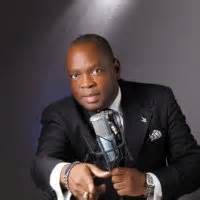In Search of Inspiration: Sir Vere C. Bird


By Spence Finlayson
Today, we go to Antigua and Barbuda for our inspiration in the person of Sir Vere C. Bird , former Prime Minster . I, unfortunately never met this great man but I had to privilege of meeting one of his sons, Sir Lester Bird, at his radio station in St. Johns, Antigua .Coincidentally , he was a well known athlete who went to college with Bahamian Olympic great Tommy Robinson at Michigan State University.
Sir Vere Cornwall Bird was born on the nth December 1909, the third of a family of four children. He was educated at St. John’s Boys School now known as the TN Kernon School.
From humble beginnings, Vere Bird evolved into a man that will come to dominate the political landscape of Antigua and Barbuda, acquiring immense power and wealth in the process.
He was viewed by many as a local hero and fighter in dealing with the English Plantocracy oppressive and exploitative working conditions in the sugar industry and the ports.
However he was also viewed as a vicious, cunning, opportunist and dictator by those who knew him personally and to many Antiguans who were subjected to his seemingly infinite rule.
On 16th January 1939, he was elected to the Executive of the Antigua Trades and Labor Union formed that very day official giving him the executive powers to continue leading the struggle of the local workers against oppressive and exploitive working conditions in the sugar industry and sea ports.
On the 26th February 1940, when the AT&LU received its legal status, he was confirmed as an Executive Member.
Three years later in September 1943, he was elevated to the post of President of the Union. In that same year, he gave the workers a public voice with the emergence of the Union’s newspaper, “The Workers Voice.” A year later, the union won the principle that a worker could not be dismissed without compensation.
In 1945, he was elected as a member of the Legislative assembly. His popularity with the people of Antigua and Barbuda enabled him to become a member of the Executive Council in 1946 although he spent much of his time in conflict with the non-elected members who represented the plantocrats of the day.
In 1951, the Union, under his leadership, established the right of the Union to negotiate for workers and for contracts to be signed with management.
He attended Caribbean trade union conferences in Trinidad in 1945, St. Kitts in 1946 and the famous Montego Bay conference in Jamaica in 1947 which decided on the creation of the West Indies Federation.
In 1951, the Union representatives, led by V. C. Bird Snr., won all eight (8) of the elected seats in the Legislature. V. C. Bird Snr. was made one of three chairmen of committees in the Executive Council.
During the period 1951-1956, he established the Peasant Development Scheme under which people received farm lands and qualified for loans. He also pushed for housing, and in 1954 alone, eleven hundred and thirty (1,130) houses were completed under an aided “self-help” scheme. concerned about the problems of drought, he ensured that a catchment of eight and a half million gallons of water be constructed. He also fought for the improvement of the telephone system and the extension of electricity supplies.
In 1953 and 1956, he was a delegate to conferences of West Indian Governments at Lancaster House in London that worked out the mechanics of West Indian Federation. During this period, he agitated for free Government schools and built the Princess Margaret School in 1955. His own Government built the second Government Secondary School, opened on 20th September 1961 at Golden Grove.
On 11 January 1960, V C Bird Snr. was appointed the first Chief Minister of Antigua. In the Nineteen Sixties (1960’s), he led the move to diversify the Antigua and Barbuda economy. He introduced tourism and other service industries to take the country out of its dependence on sugar production.
After the collapsed of the West Indian Federation in 1962, regionalism seemed to be disappearing as a distant dream. Along with Errol Barrow of Barbados and Forbes Burnham of Guyana, VC Bird brought the Caribbean Free Trade Association into being in a Conference held at Dickenson Bay Antigua in 1965. This was the genesis of the Caribbean Community integration of trade relations into the CARICOM Market (CARICOM) which today comprises 15 Member States.
In 1966, V. C. Bird led a delegation to the United Kingdom to seek independence for Antigua and Barbuda. The British denied granting full independence but agreed to Associated Status. The agreement gave the Government of Antigua and Barbuda full control of all internal affairs while Briton retained control of its defense and external matters. In February 1967, Vere Cornwall Bird was appointed the country’s first Premier.
In the 1971 General Elections, V. C. Bird Snr. lost his seat and his party lost the Government to the Progressive labor Movement (PLM) led by George Walter who had broken away from the Antigua Trades and Labor Union to form a rival union, the Antigua Workers Union and then, eventually, the PLM.
Five years later, in 1976, V. C. Bird Snr. was re-elected to Parliament, and his Antigua Labor Party formed the Government once again.
He led his party to another election victory in 1980, and that same year (1980) he went back to Lancaster House in London seeking full independence for Antigua and Barbuda which was finally granted by Great Britain on the 1st November 1981.

Spence M. Finlayson is the founder & CEO of The Phoenix Institute For Positive Development & Empowerment, a Human Resources Development firm based in Nassau with a global reach. He can be contacted at his email at [email protected] or via his website The Phoenix Empowerment


